RARE! WWII VII Fighter Command P-51 Mustang Pilot Chichi Shima Retto (Iwo Jima Island Group) "Kneepocket" Flight Combat Map
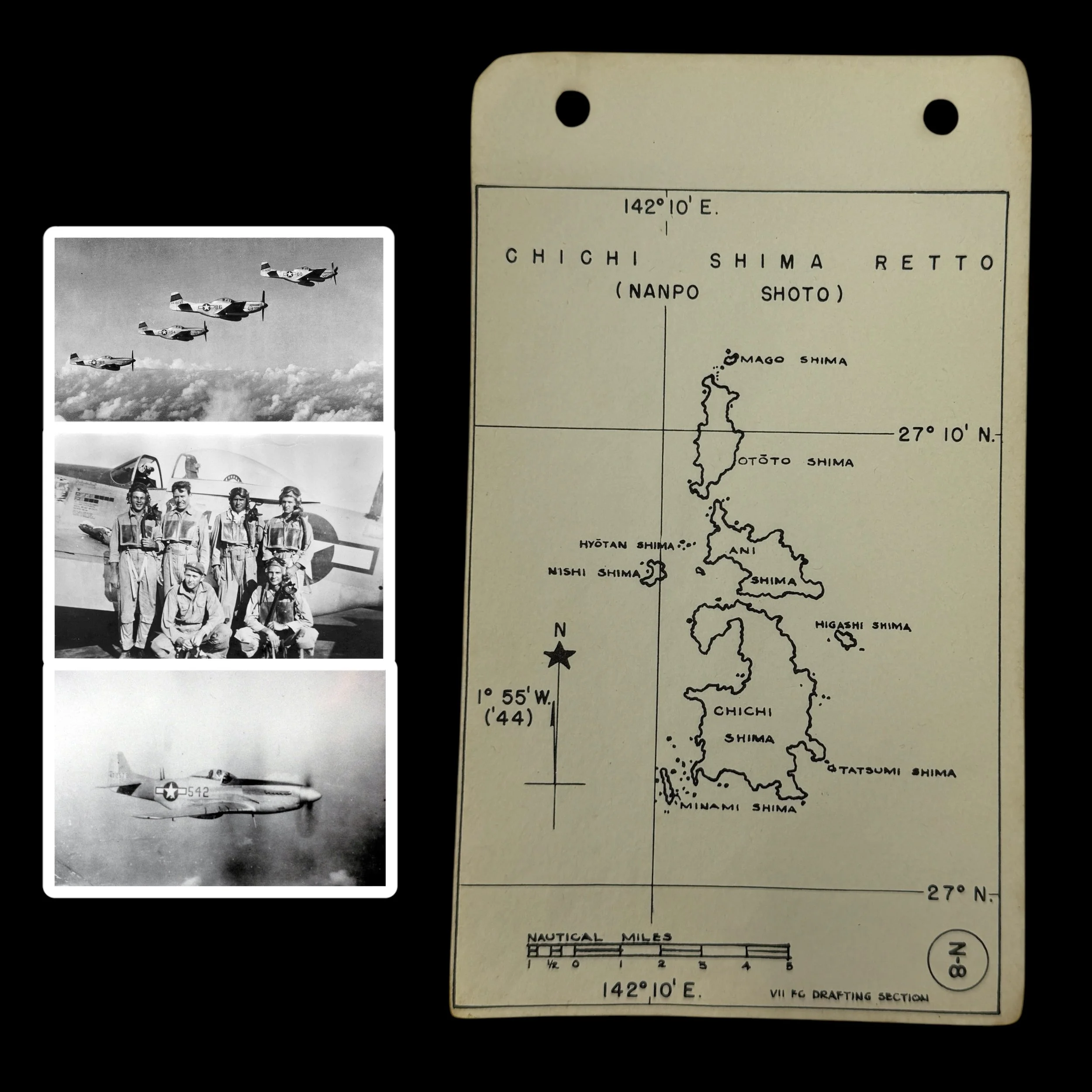
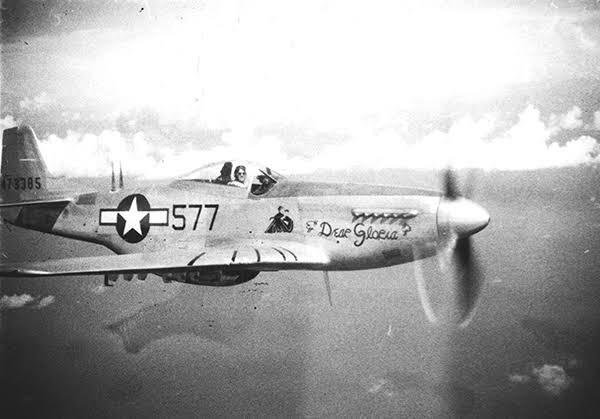
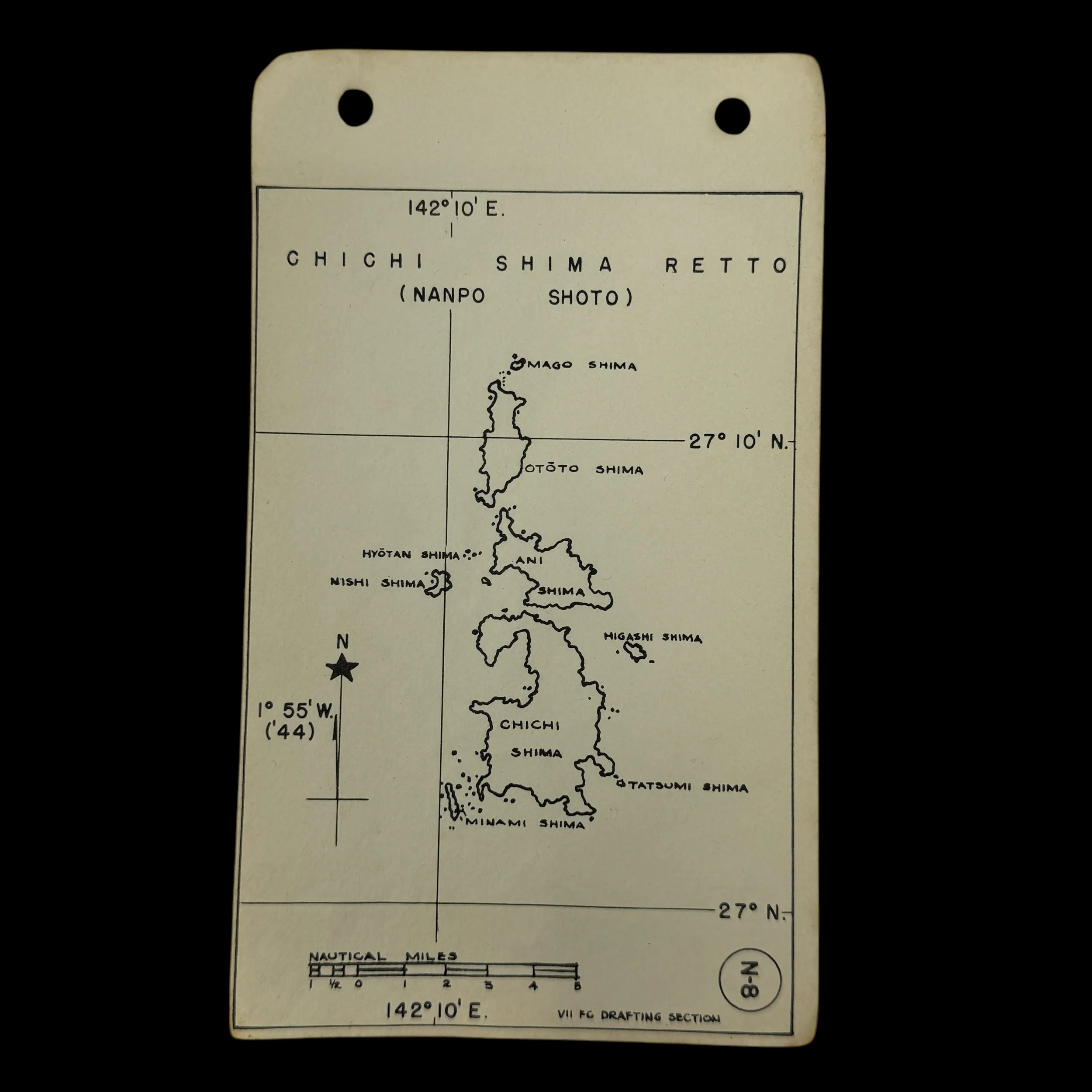
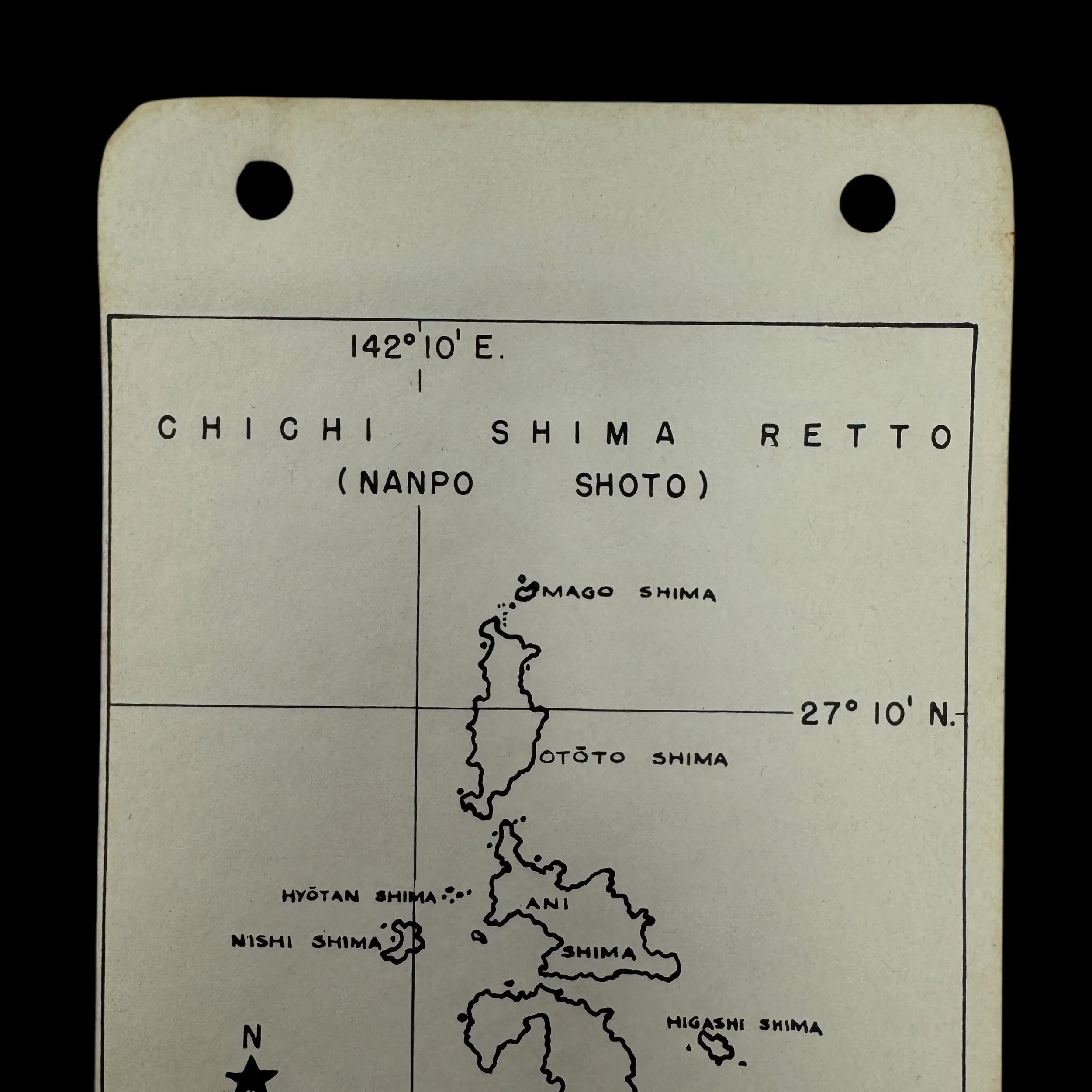
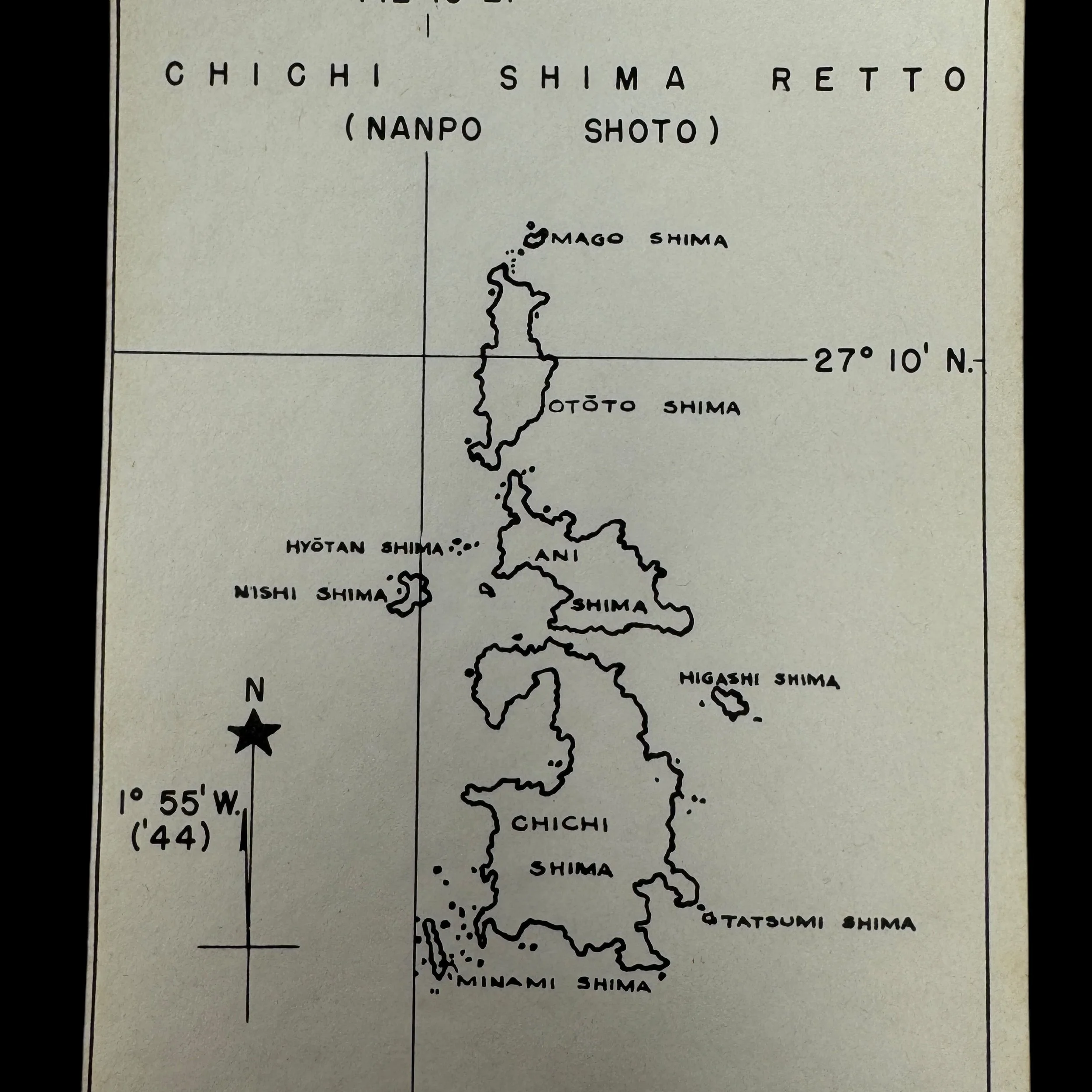
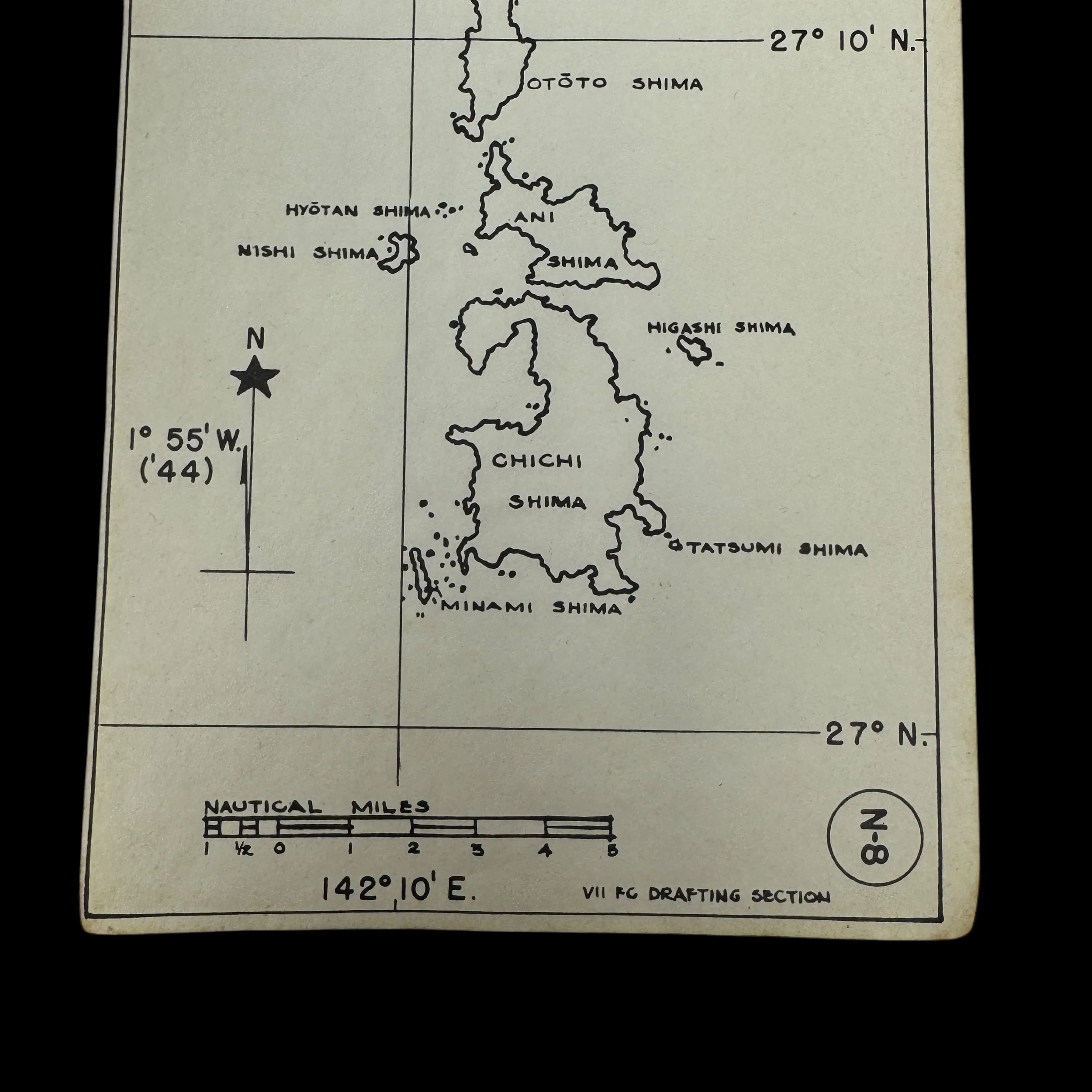
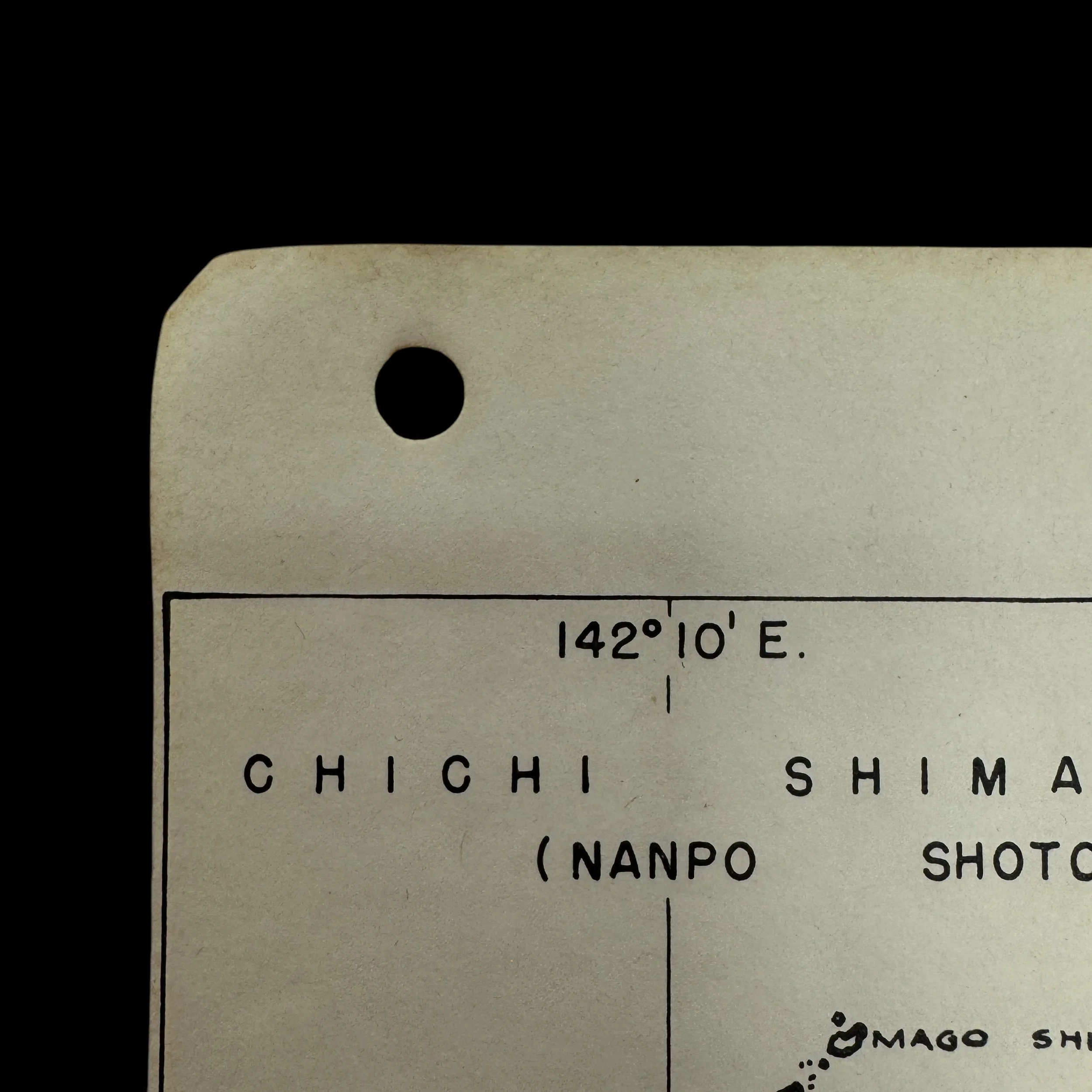

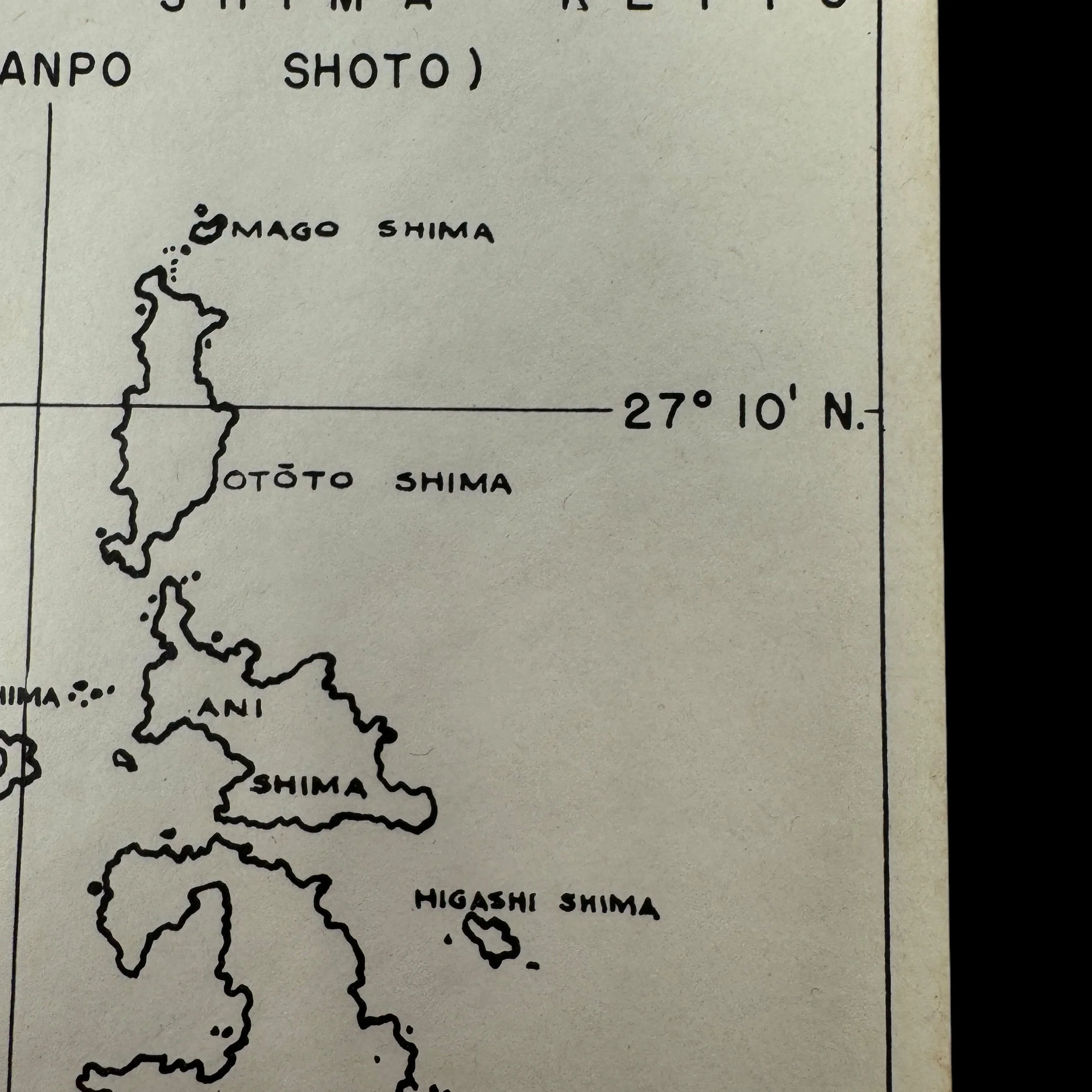
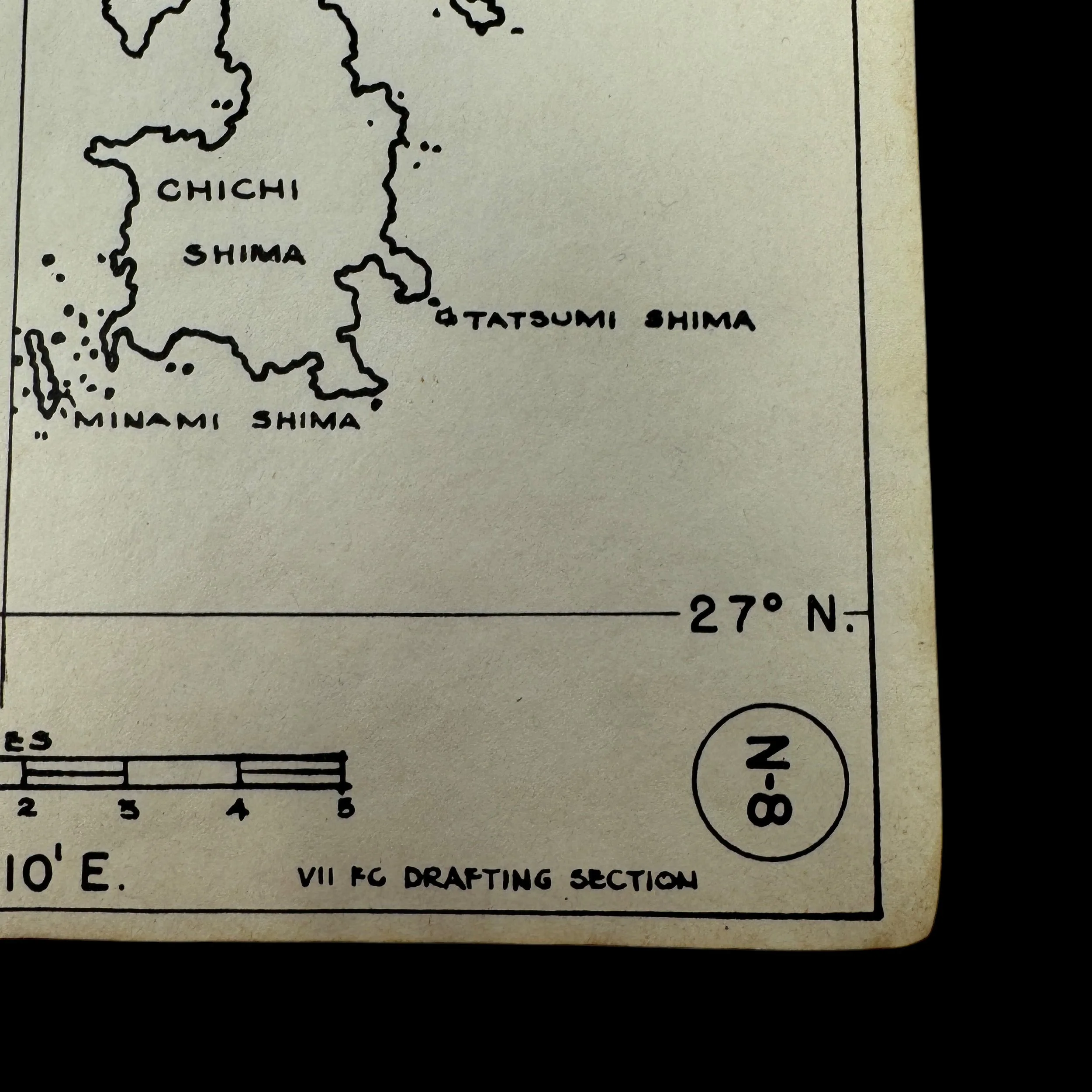
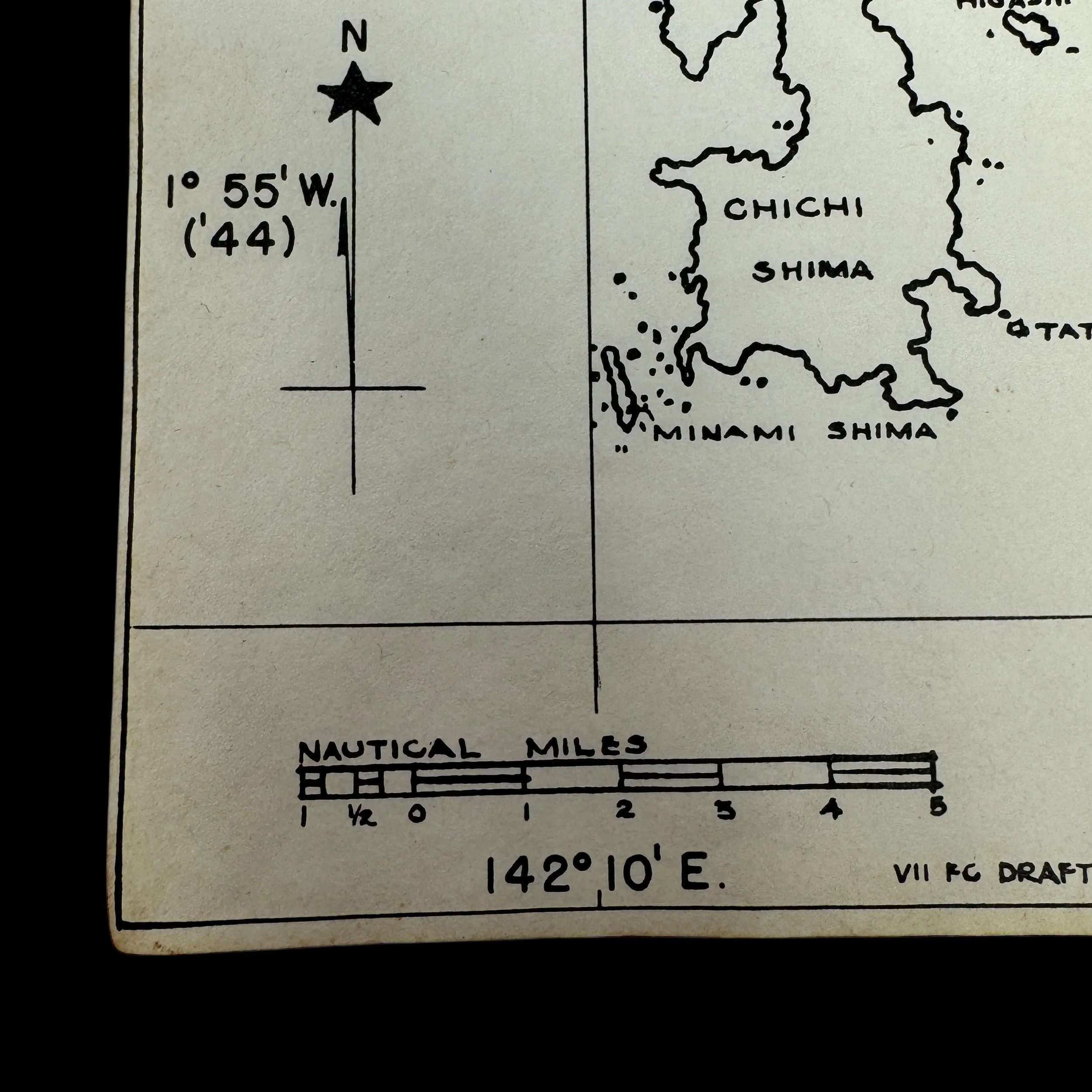
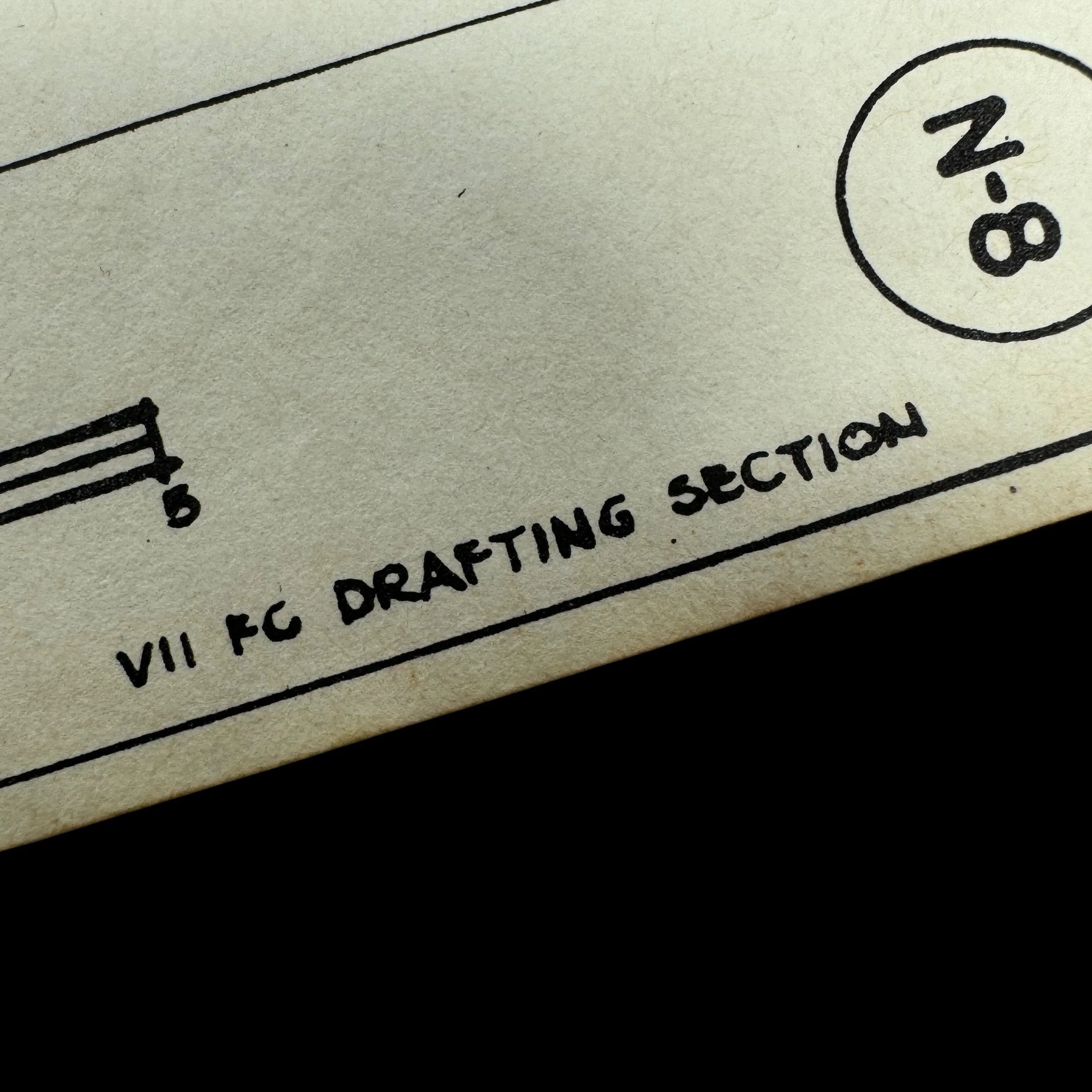
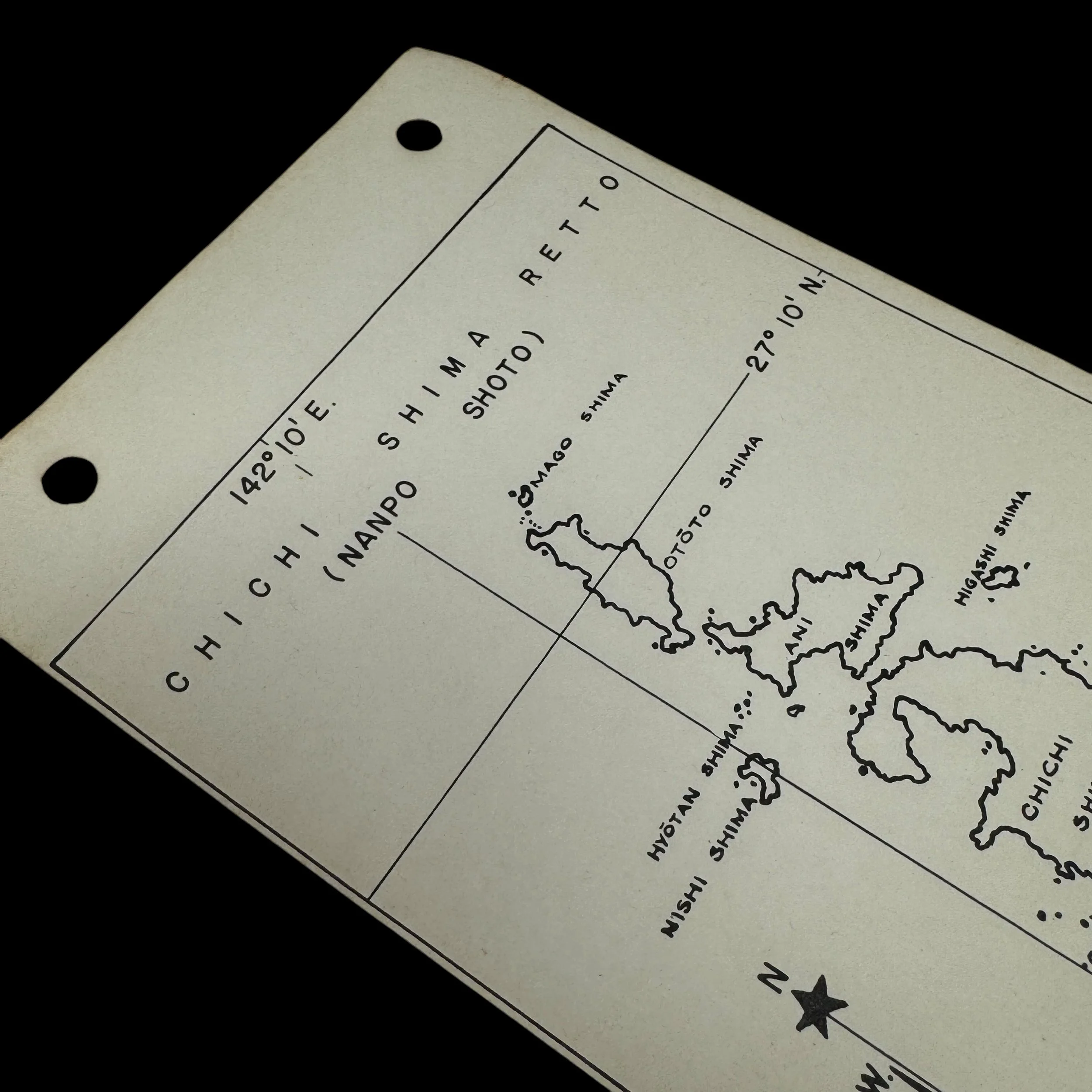
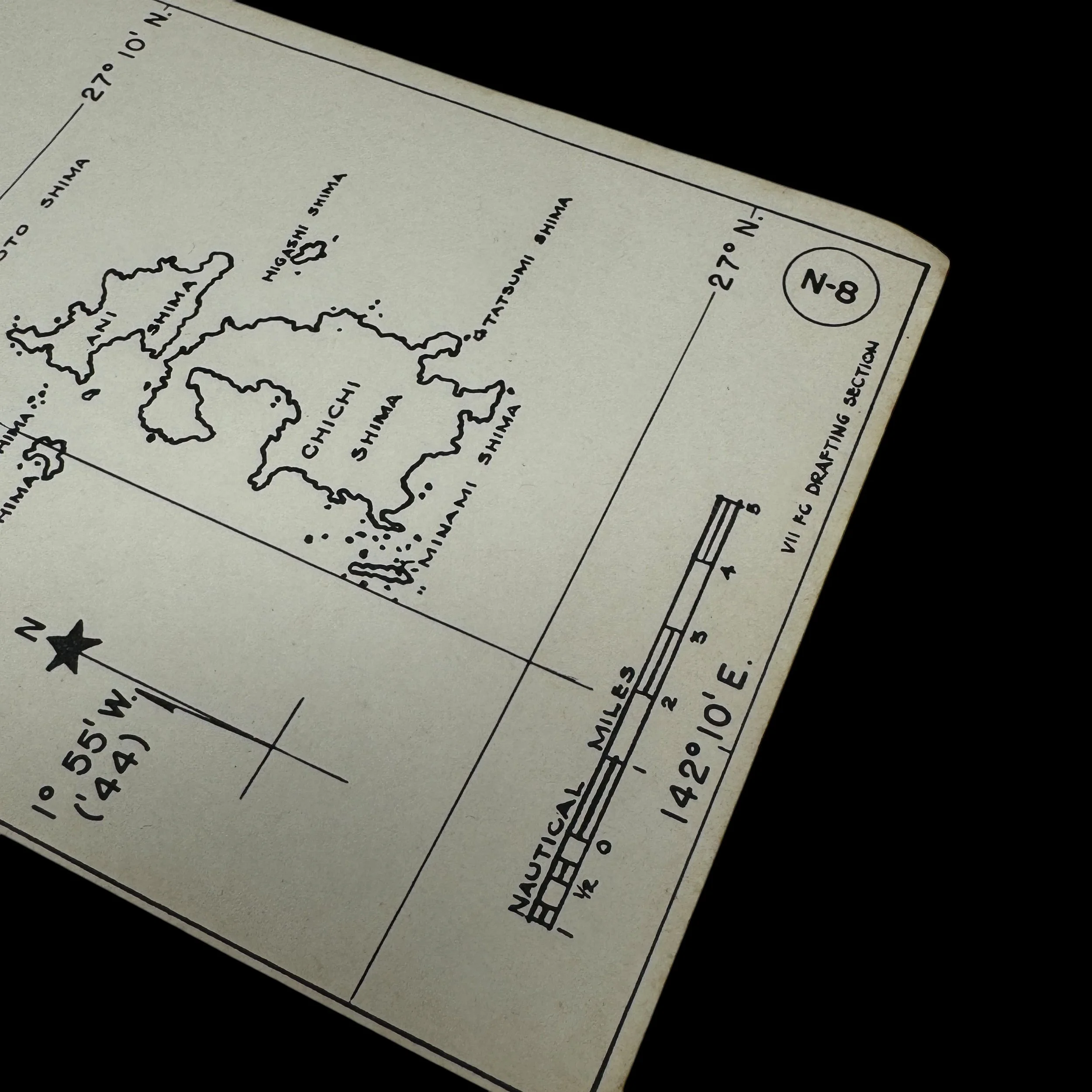
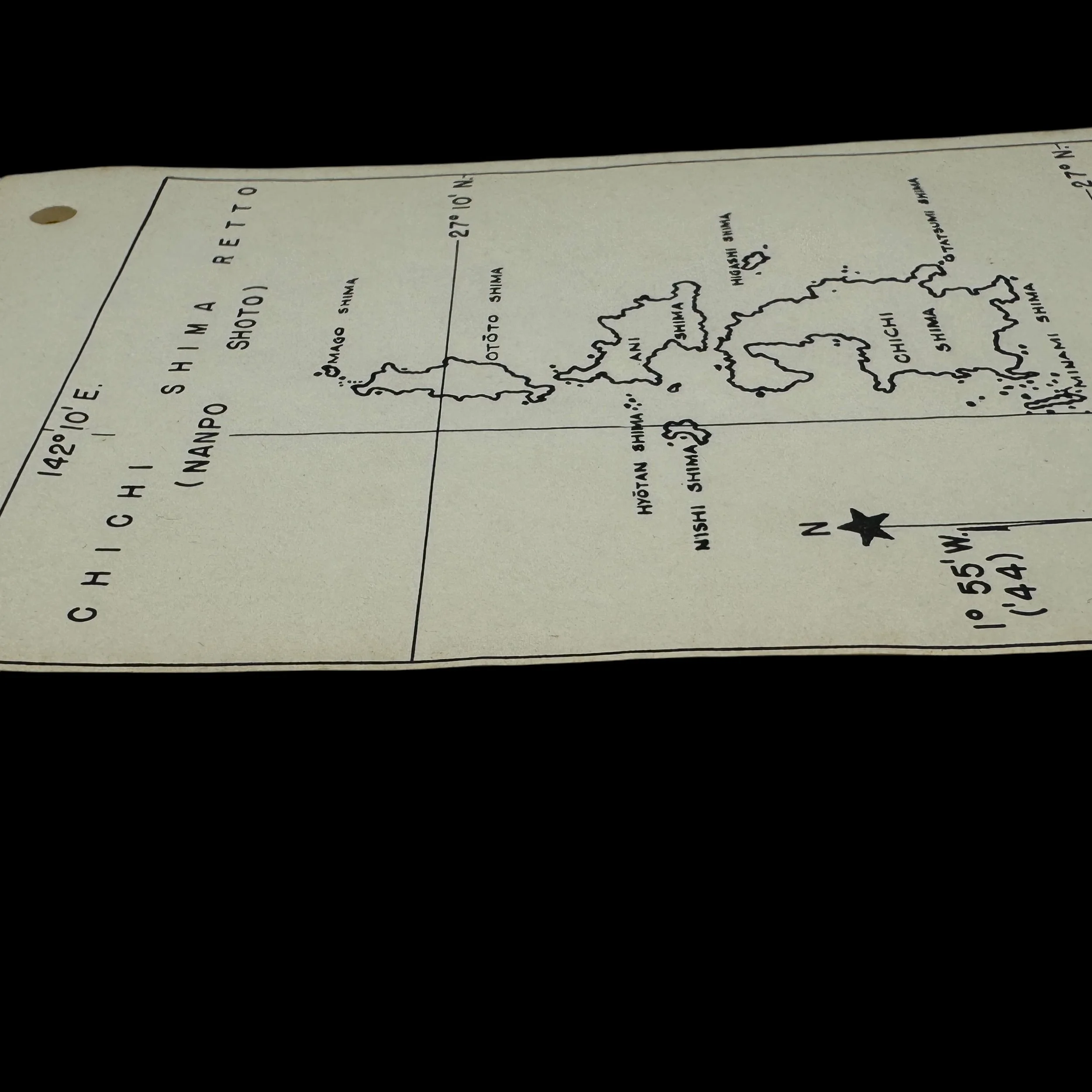
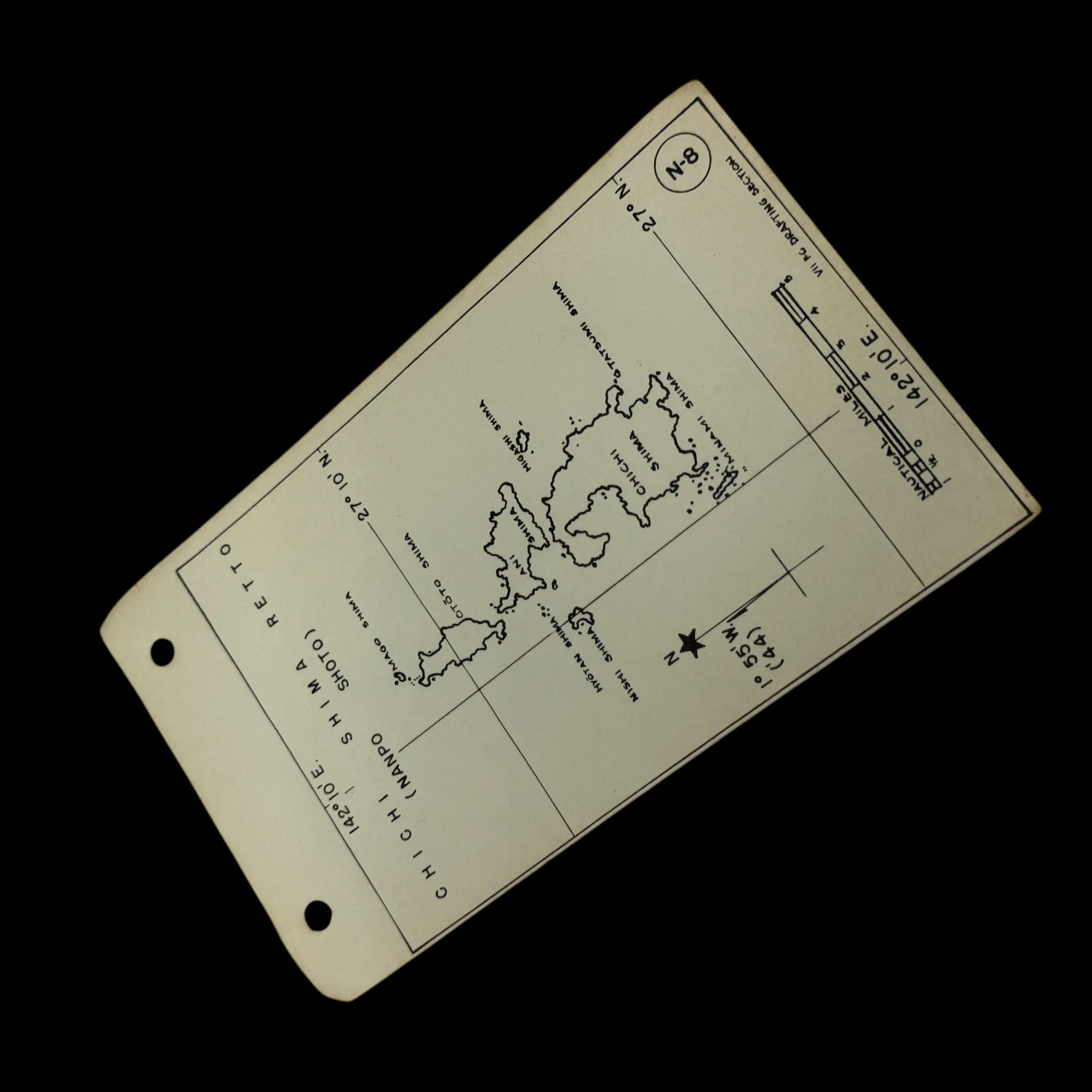
RARE! WWII VII Fighter Command P-51 Mustang Pilot Chichi Shima Retto (Iwo Jima Island Group) "Kneepocket" Flight Combat Map
Comes with a hand-signed C.O.A.
“As part of the Seventh Air Force, the VII Fighter Command P-51 pilots were instrumental in securing U.S. air superiority, conducting long-range escort missions, and supporting the strategic bombing campaign against Japan. Their deployment in the Marianas Campaign was pivotal to the success of the island-hopping strategy and the eventual destruction of Japan’s war-making capabilities”
Type: Original World War II VII Fighter Command “Kneepocket" Flight Map Specially Made For P-51 Mustang Pilots of the Seventh Air Force’s VII Fighter Command (Field Printed at VII Fighter Command Forward Operating Airfield in the Pacific Theater)
Titled: Chichi Shima Retto - Nanpo Shoto (Iwo Jima Island Group)
One of the primary roles of VII Fighter Command P-51 pilots operating around Chichi Shima was to perform aerial reconnaissance and fighter sweeps designed to neutralize Japanese airpower before major operations against Iwo Jima and later Okinawa. These missions were high-risk undertakings. VII Fighter Command pilots would launch from forward airfields in the Marianas, such as Saipan or Tinian, and navigate long distances over open ocean, often with minimal margin for error in fuel calculations. Upon reaching Chichi Shima, they faced intense anti-aircraft fire and the threat of interception by Japanese fighter aircraft, notably the Mitsubishi A6M Zero and other home-defense fighters. Operations over Chichi Shima were designed to both cripple the island’s ability to communicate with the Japanese home islands and to draw out and destroy Japanese fighters. VII Fighter Command pilots often engaged in aggressive sweeps to clear the skies before heavier bombing raids by the Twentieth Air Force’s B-29 Superfortresses or naval bombardments. Chichi Shima’s facilities, including its radio stations, ports, and minor airstrips, were prime targets. The suppression of these capabilities was critical, especially since Chichi Shima served as a crucial relay point for Japanese communications in the Pacific. Cutting off Chichi Shima’s ability to alert mainland Japan of incoming American forces was vital for the success of upcoming operations, particularly the Iwo Jima invasion.
Size: 4 × 7 inches
This incredibly rare, museum-grade World War II artifact is an original combat map used by United States Army Air Forces (USAAF) pilots from the Pacific Theater's VII Fighter Command. Known among pilots as the "kneepocket" map, this essential navigation tool was carried by all P-51 Mustang pilots on every combat mission during the war.
Designed and field-printed by the “VII Fighter Command Drafting Section”, this compact yet detailed map was tailored for the specific challenges faced during long-range escort and reconnaissance missions over the vast Pacific Ocean. It was designed to fit perfectly inside the large knee pocket of a P-51 pilot’s flight suit, ensuring easy access without interfering with cockpit controls during combat missions.
The kneepocket map was vital during missions, whether escorting B-29 Superfortresses on Very Long Range (VLR) bombing runs to Japan, or conducting fighter sweeps and reconnaissance. Pilots used this map while in the air to track their positions, coordinate formation movements, and record real-time intelligence on enemy activity and potential targets.
Additionally, the map played a crucial role in emergency planning, providing vital information about nearby islands for potential crash landings. In a theater where engine failure, damage from enemy fire, or fuel shortages posed constant threats, the kneepocket map could mean the difference between survival and being lost at sea.
As a field-produced document, each map was unique, and only a handful of examples with direct connections to the VII Fighter Command have survived, with most reserved for high-end museum archives. Today, these original VII Fighter Command combat maps are exceedingly rare artifacts of WWII aviation history.
VII Fighter Command and the P-51 Mustang: Air Superiority Operations over Chichi Shima and the Nanpō Shōtō, 1944–1945
During World War II, the VII Fighter Command played a crucial yet often underappreciated role in the Pacific Theater, particularly in operations surrounding the Nanpō Shōtō (commonly referred to by Americans at the time as the Bonin and Volcano Islands) region, which included strategic locations like Chichi Shima (Chichi-jima). From 1944 to 1945, VII Fighter Command’s missions, heavily involving P-51 Mustang pilots, were instrumental in suppressing Japanese strongholds, gathering intelligence, and securing air superiority to pave the way for the broader Allied offensives against Japan’s home islands.
The VII Fighter Command was originally organized as part of the Seventh Air Force and based in Hawaii following the attack on Pearl Harbor. As the war evolved, the command's role expanded dramatically. Initially tasked with the defense of the Hawaiian Islands, VII Fighter Command transitioned into a vital offensive force, conducting long-range fighter operations over enemy-held territories across the Central Pacific. This transformation aligned with the broader island-hopping strategy championed by U.S. military leadership, seeking to bypass heavily fortified islands, isolate Japanese garrisons, and establish airfields closer to the Japanese mainland.
By mid-1944, with the successful seizure of bases in the Marshall and Mariana Islands, the U.S. military now had staging grounds from which to directly threaten Japanese strongholds further north, including the Nanpō Shōtō chain. Chichi Shima, situated roughly 150 miles north of Iwo Jima and serving as a major Japanese communications hub, became a significant target. Though smaller and less fortified than the main Japanese home islands, Chichi Shima was heavily defended by radar installations, anti-aircraft batteries, and Japanese fighter units, making operations in the area extremely hazardous for American airmen.
The VII Fighter Command, now equipped with the new long-range North American P-51 Mustang, was tasked with several key missions in and around Chichi Shima from 1944 into early 1945. The introduction of the P-51D Mustang — a revolutionary aircraft boasting both exceptional speed and range — allowed VII Fighter Command pilots to escort bombers, conduct fighter sweeps, and engage in tactical strikes deep into Japanese-controlled territory, including over Chichi Shima.
One of the primary roles of VII Fighter Command P-51 pilots operating around Chichi Shima was to perform aerial reconnaissance and fighter sweeps designed to neutralize Japanese airpower before major operations against Iwo Jima and later Okinawa. These missions were high-risk undertakings. VII Fighter Command pilots would launch from forward airfields in the Marianas, such as Saipan or Tinian, and navigate long distances over open ocean, often with minimal margin for error in fuel calculations. Upon reaching Chichi Shima, they faced intense anti-aircraft fire and the threat of interception by Japanese fighter aircraft, notably the Mitsubishi A6M Zero and other home-defense fighters.
Operations over Chichi Shima were designed to both cripple the island’s ability to communicate with the Japanese home islands and to draw out and destroy Japanese fighters. VII Fighter Command pilots often engaged in aggressive sweeps to clear the skies before heavier bombing raids by the Twentieth Air Force’s B-29 Superfortresses or naval bombardments. Chichi Shima’s facilities, including its radio stations, ports, and minor airstrips, were prime targets. The suppression of these capabilities was critical, especially since Chichi Shima served as a crucial relay point for Japanese communications in the Pacific. Cutting off Chichi Shima’s ability to alert mainland Japan of incoming American forces was vital for the success of upcoming operations, particularly the Iwo Jima invasion.
In these missions, the P-51 Mustang proved indispensable. The fighter’s ability to fly higher, faster, and farther than previous American aircraft gave VII Fighter Command a decisive edge. Pilots of the VII Fighter Command adapted quickly to the demands of escorting bombers over extreme ranges while still having the agility to engage in dogfights when necessary. Their presence often meant the difference between a bomber formation successfully reaching its target or being savaged by Japanese interceptors.
One notable aspect of the VII Fighter Command’s operations around Chichi Shima was the experimental nature of some of their tactics. Because these missions were so long — sometimes exceeding eight hours round-trip — VII Fighter Command worked closely with engineers and logisticians to optimize fuel tanks, improve navigation methods, and better coordinate search and rescue operations for downed pilots. The missions around Chichi Shima and the Nanpō Shōtō region became a proving ground for the kind of long-range fighter escort that would soon become critical over Japan itself.
Combat around Chichi Shima also demonstrated the tremendous bravery and resilience of the P-51 Mustang pilots. Engagements were frequently chaotic and deadly. Pilots often had to contend with not only determined Japanese fighters but also the unforgiving ocean, the ever-present danger of mechanical failure over vast stretches of water, and the difficulty of locating the tiny specks of airfields or carrier decks upon return.
The importance of VII Fighter Command’s work in the Nanpō Shōtō, including Chichi Shima, cannot be overstated. Their ability to dominate the air over Chichi Shima severely limited Japan’s early-warning capabilities, isolated the garrison stationed there, and helped neutralize a strategic communications and logistical hub. Their missions directly contributed to the success of later American operations against Iwo Jima, where gaining control of the island’s airfields would provide a desperately needed emergency landing site for B-29s returning from missions over Japan.
Furthermore, the VII Fighter Command’s experiences flying long-range missions around Chichi Shima informed the development of even more aggressive and sustained air operations later in 1945, as the United States closed in on Japan itself. The lessons learned in navigation, fuel management, escort tactics, and combat endurance would be essential in the grueling final campaigns of the Pacific War.
In sum, the VII Fighter Command’s operations in and around Chichi Shima represented a critical turning point in the Pacific air war. The P-51 pilots, flying some of the longest and most dangerous fighter missions of the conflict up to that time, not only showcased the technological advancements of American aviation but also embodied the courage, adaptability, and determination that characterized the final American push toward victory. Their work over the skies of Chichi Shima helped sever Japanese communications in the Pacific, reduced the threat to American bomber forces, and brought the Allied forces one step closer to the heart of Japan itself.